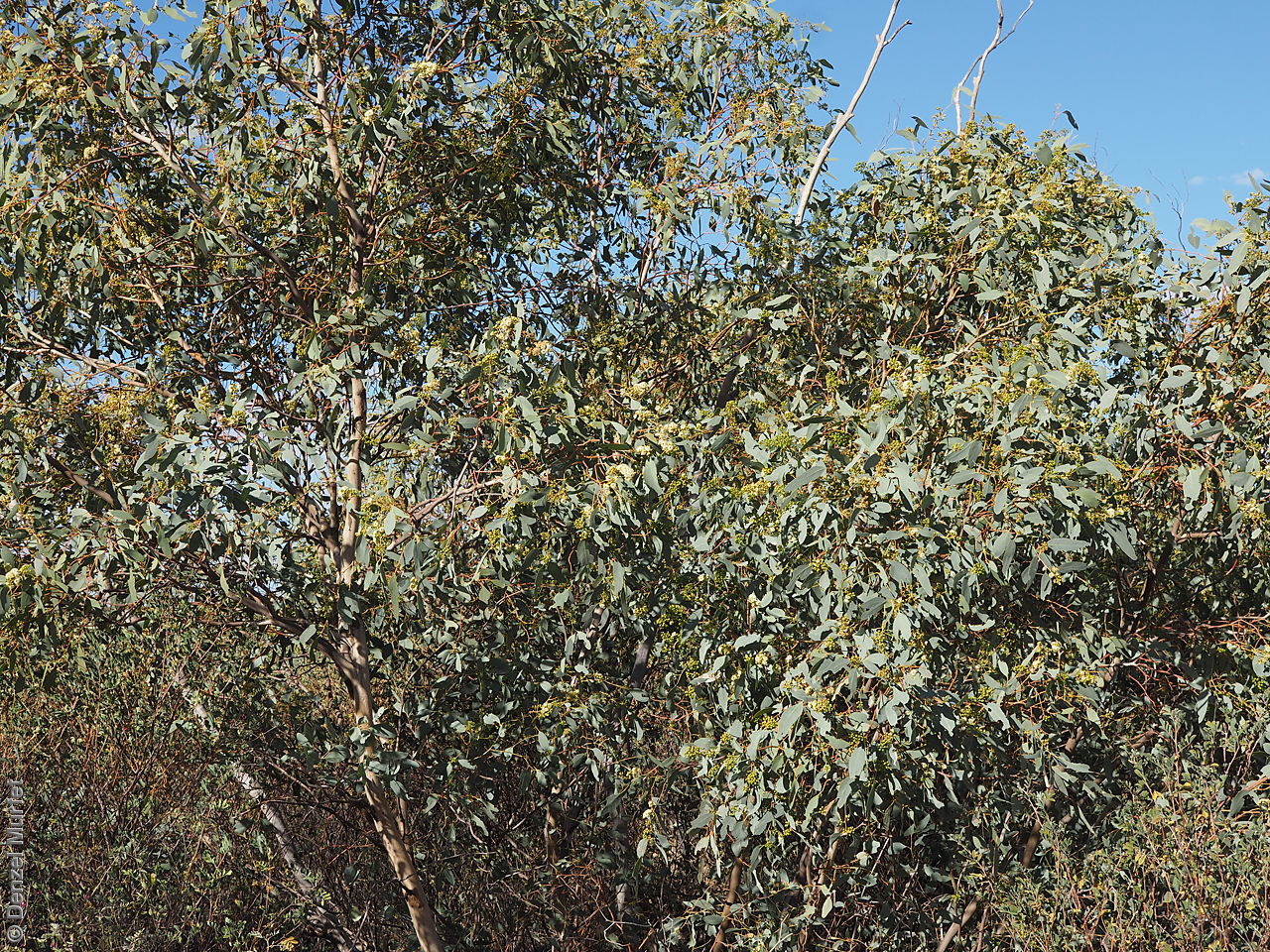
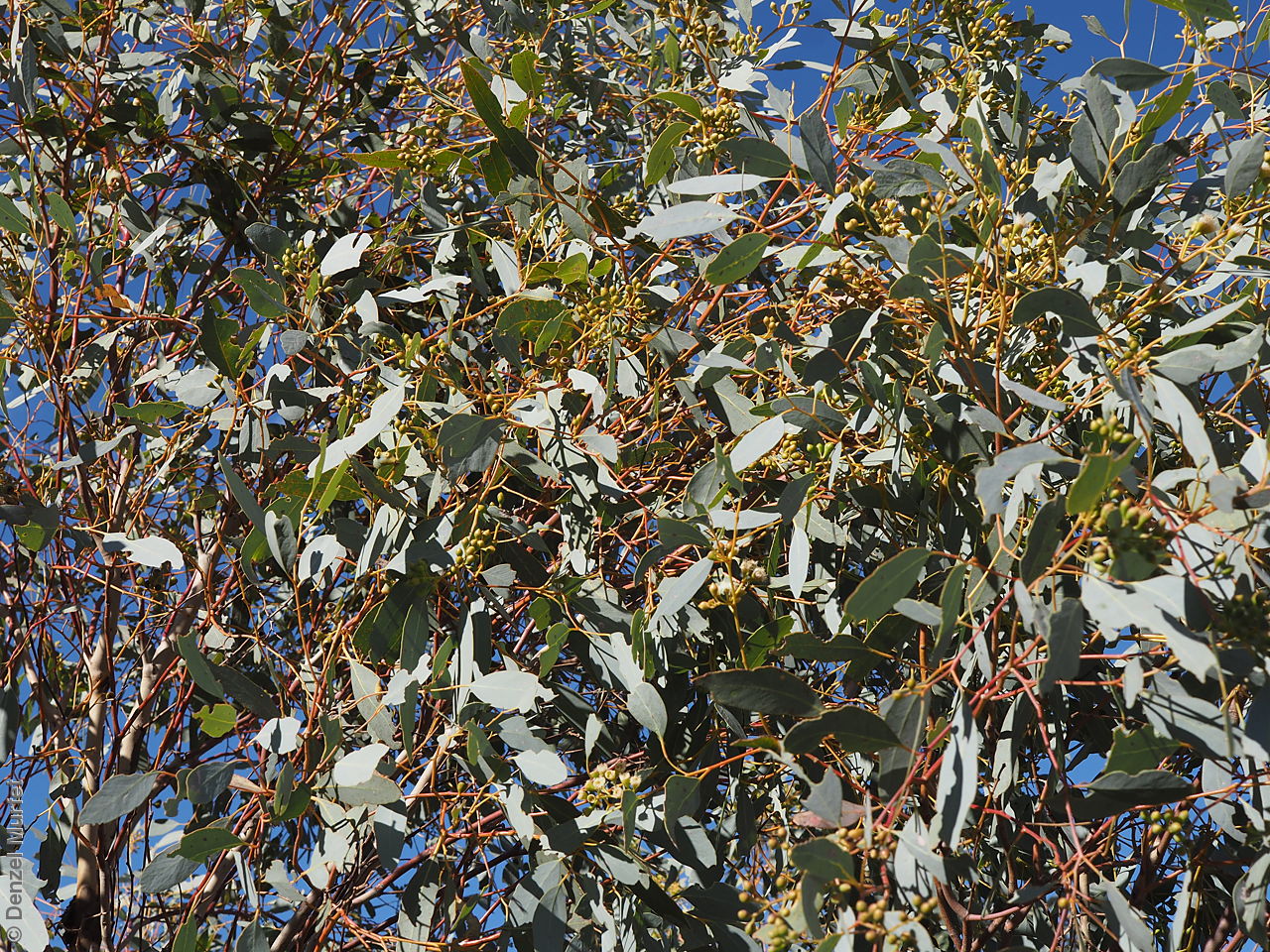
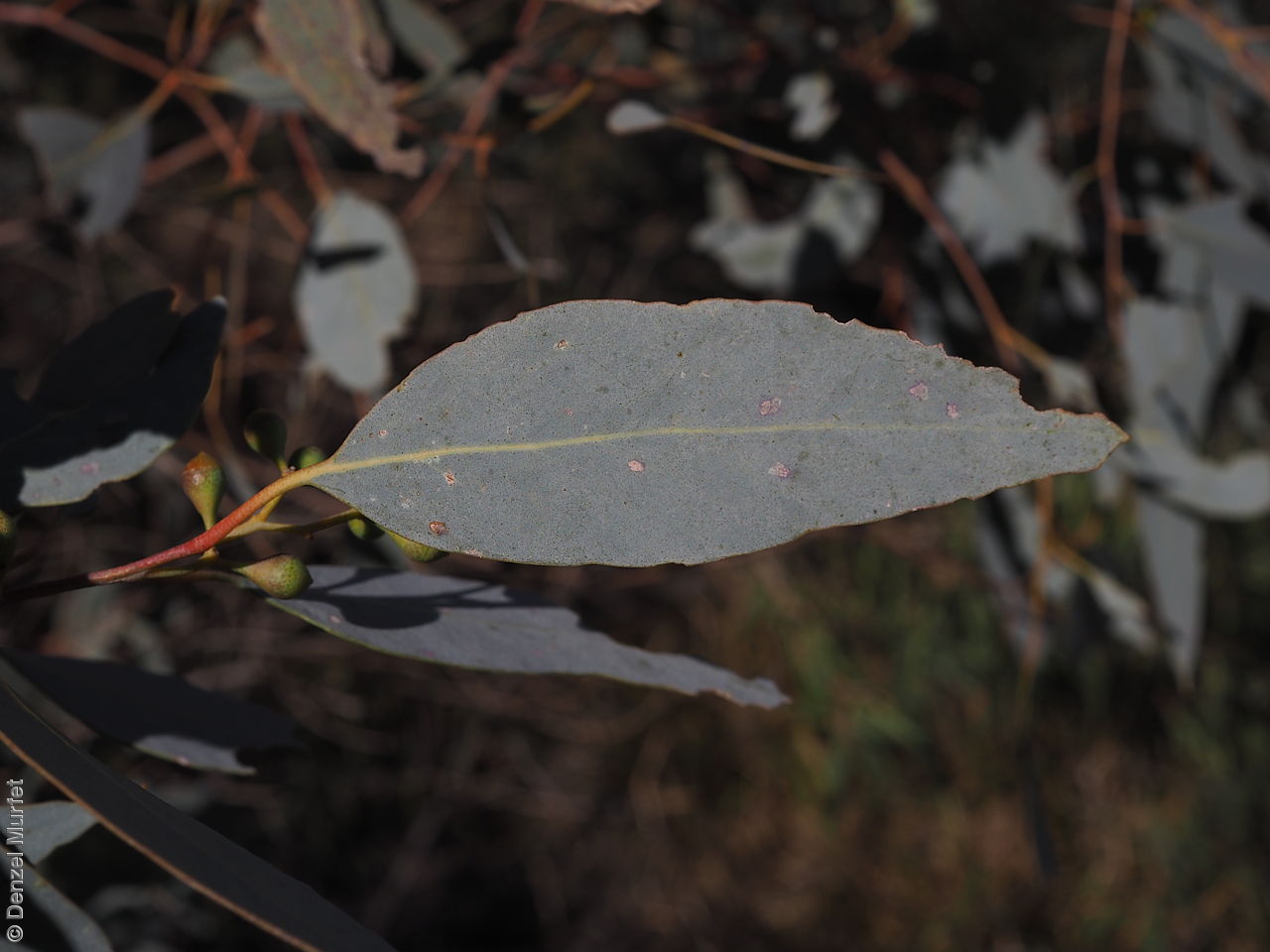
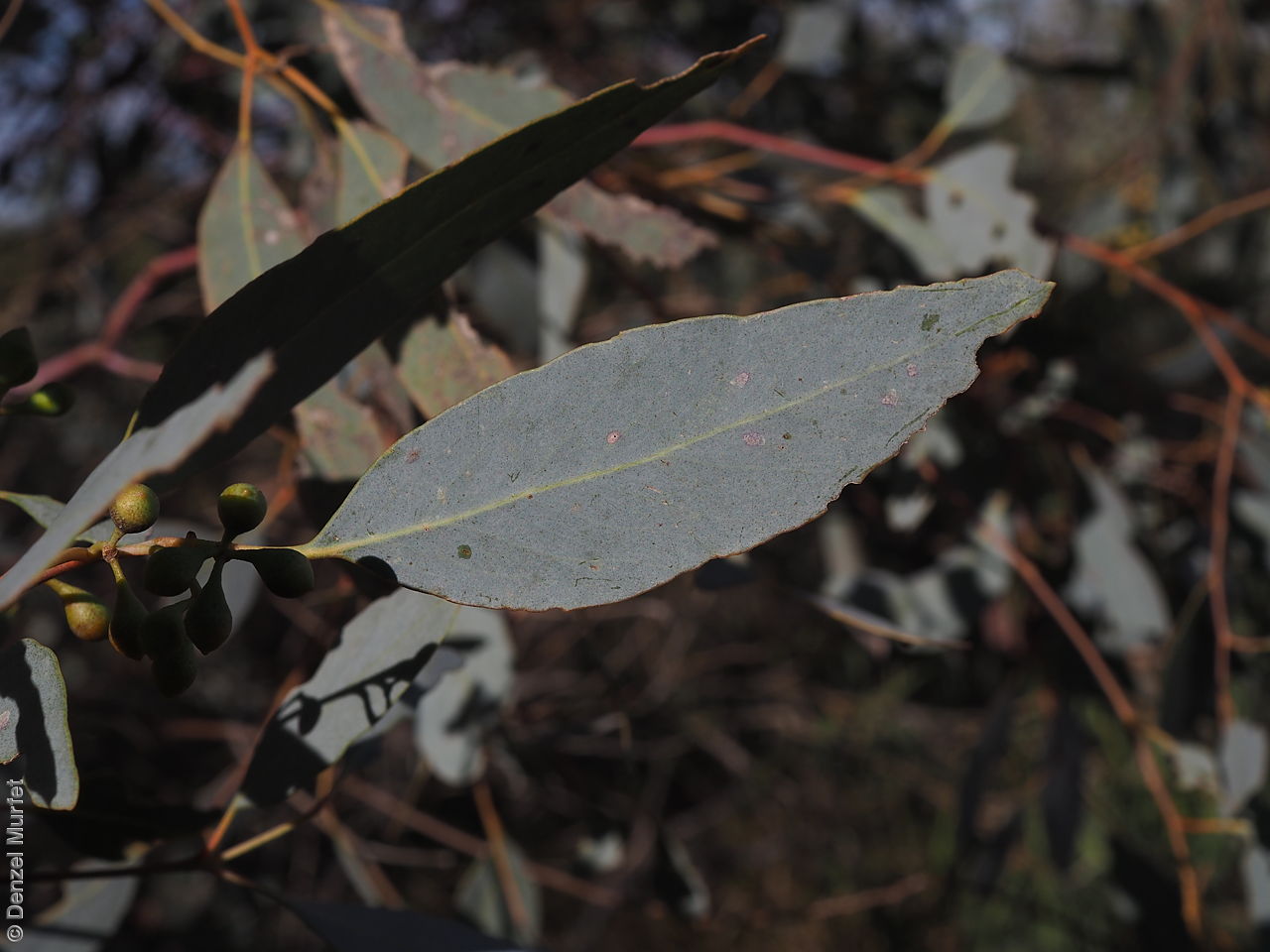
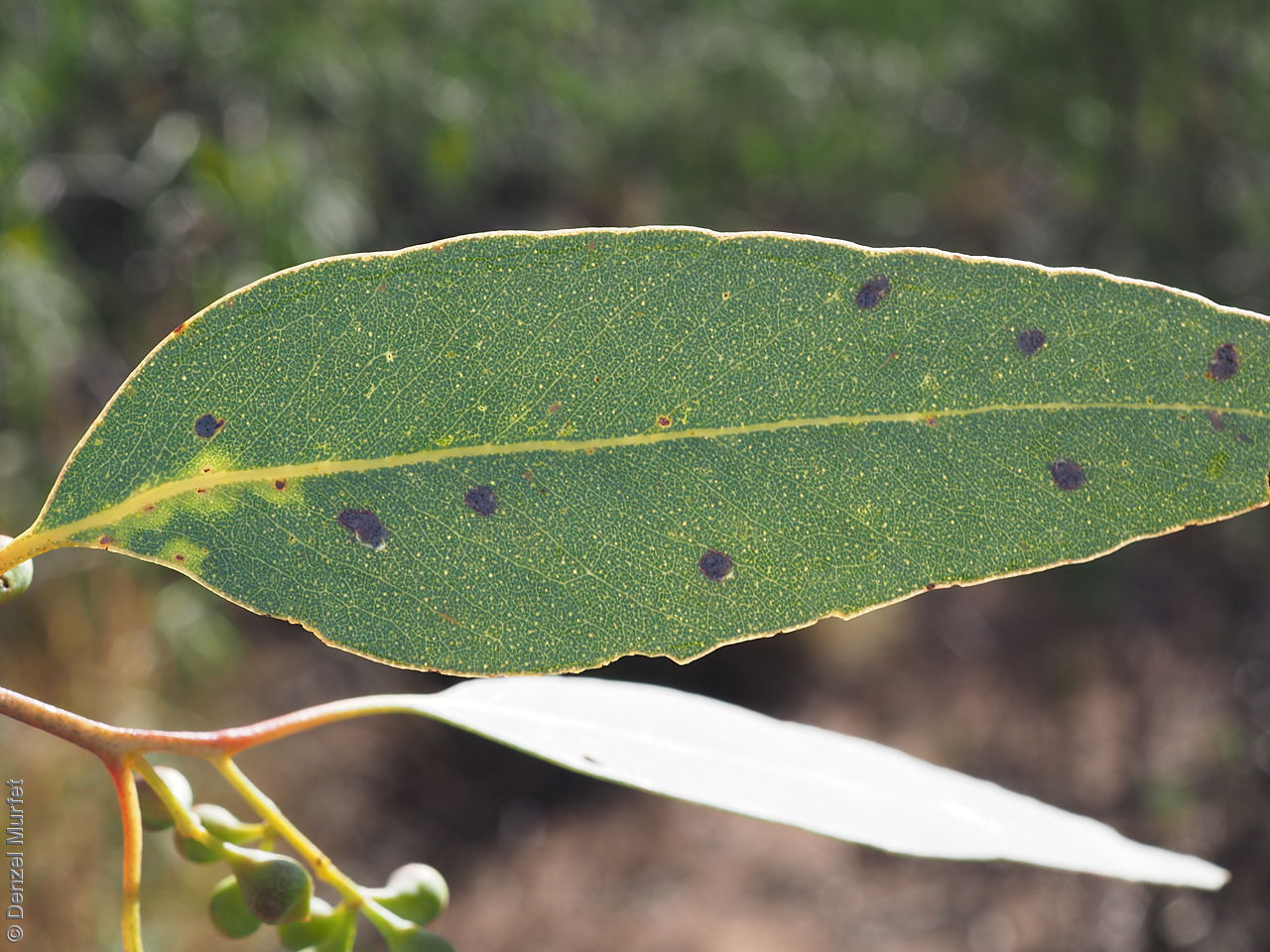
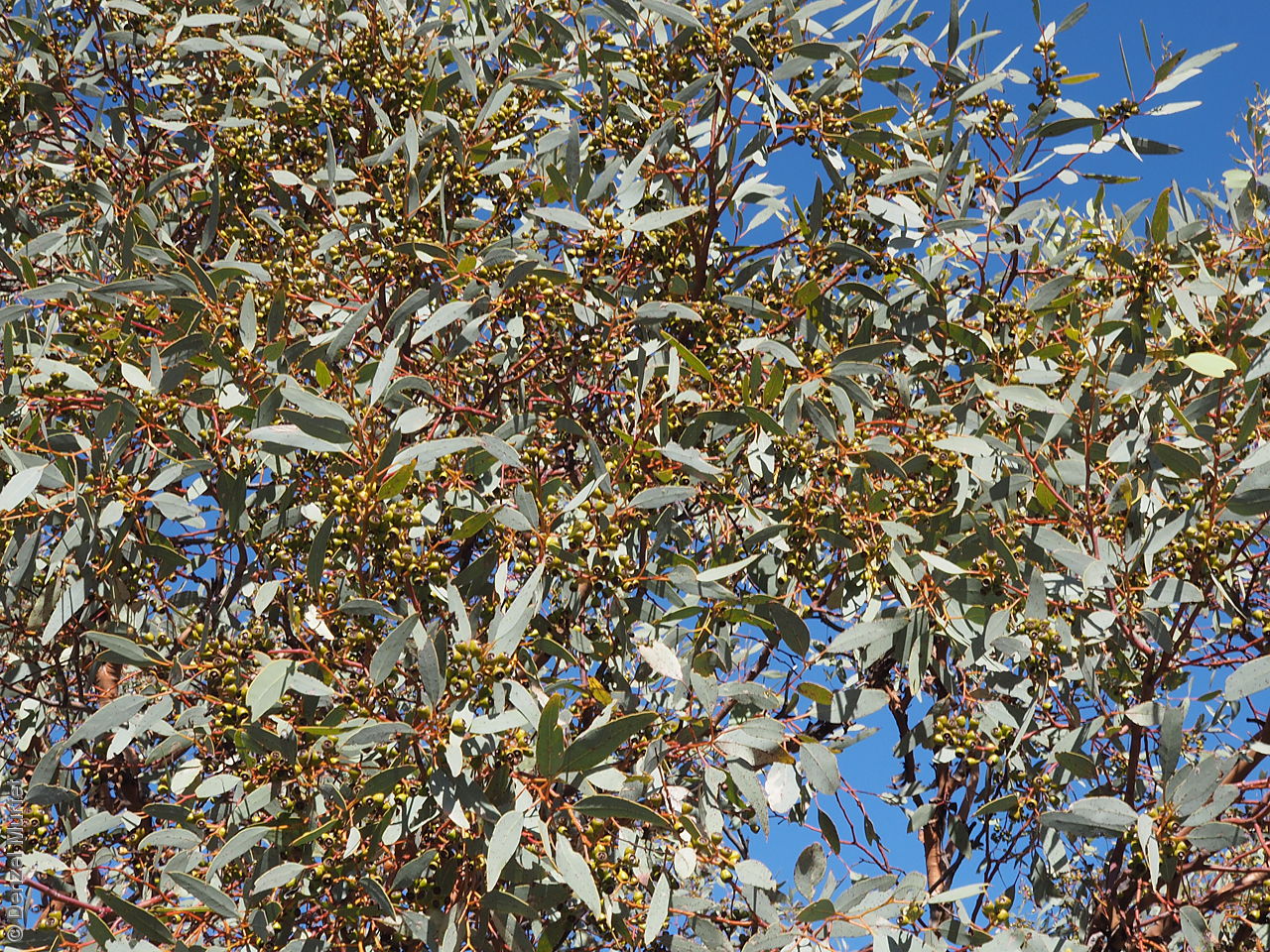
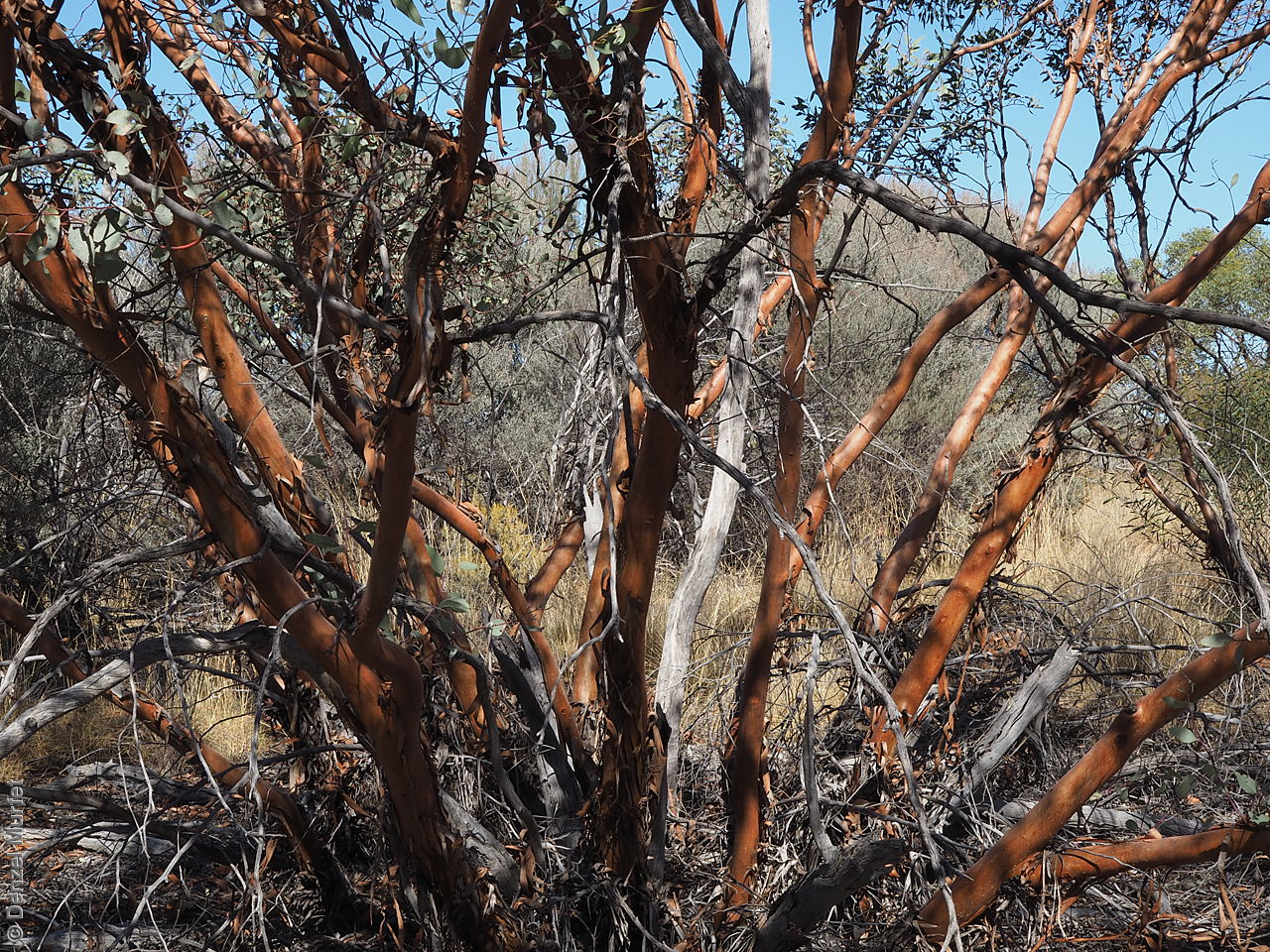
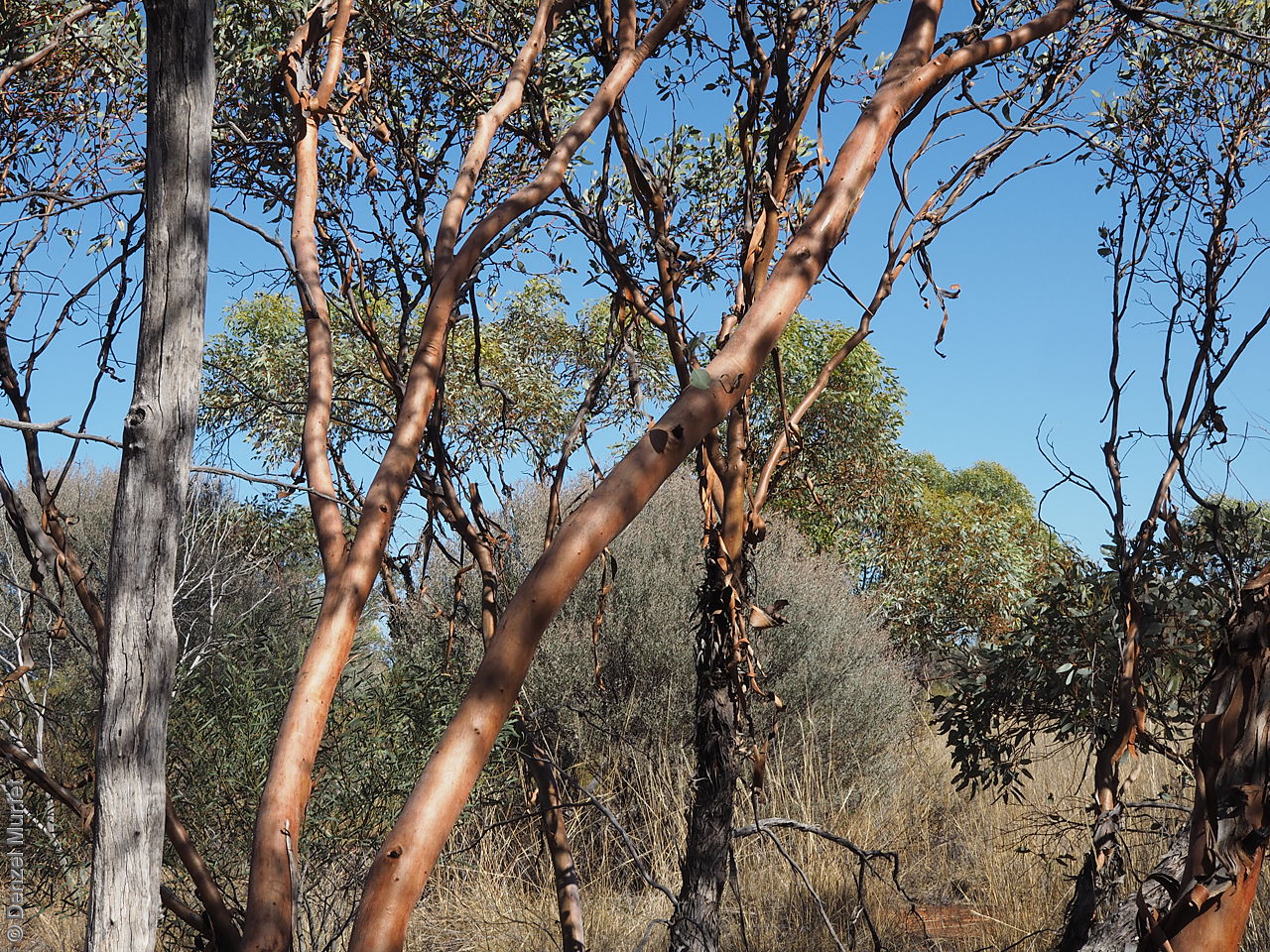
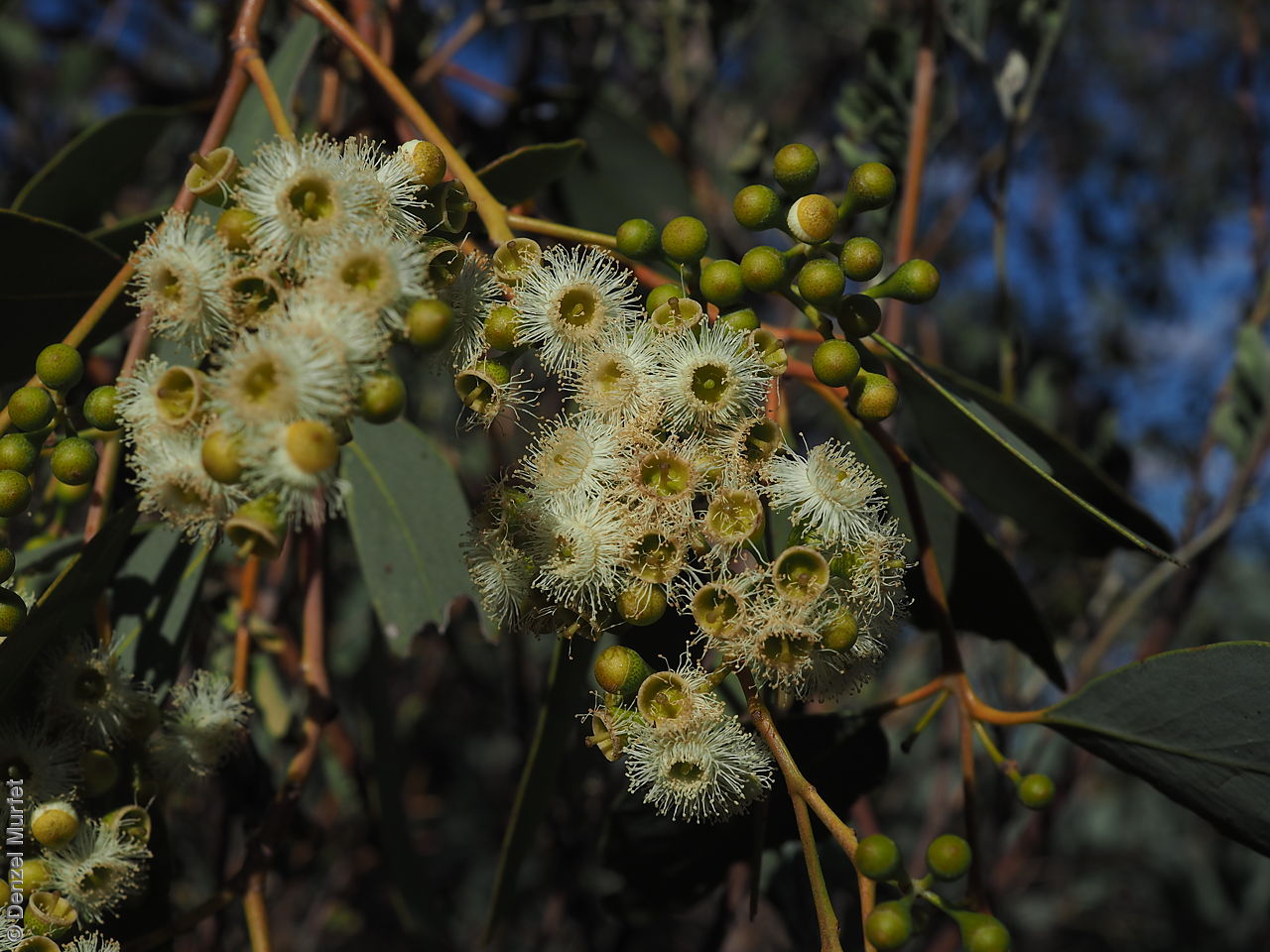
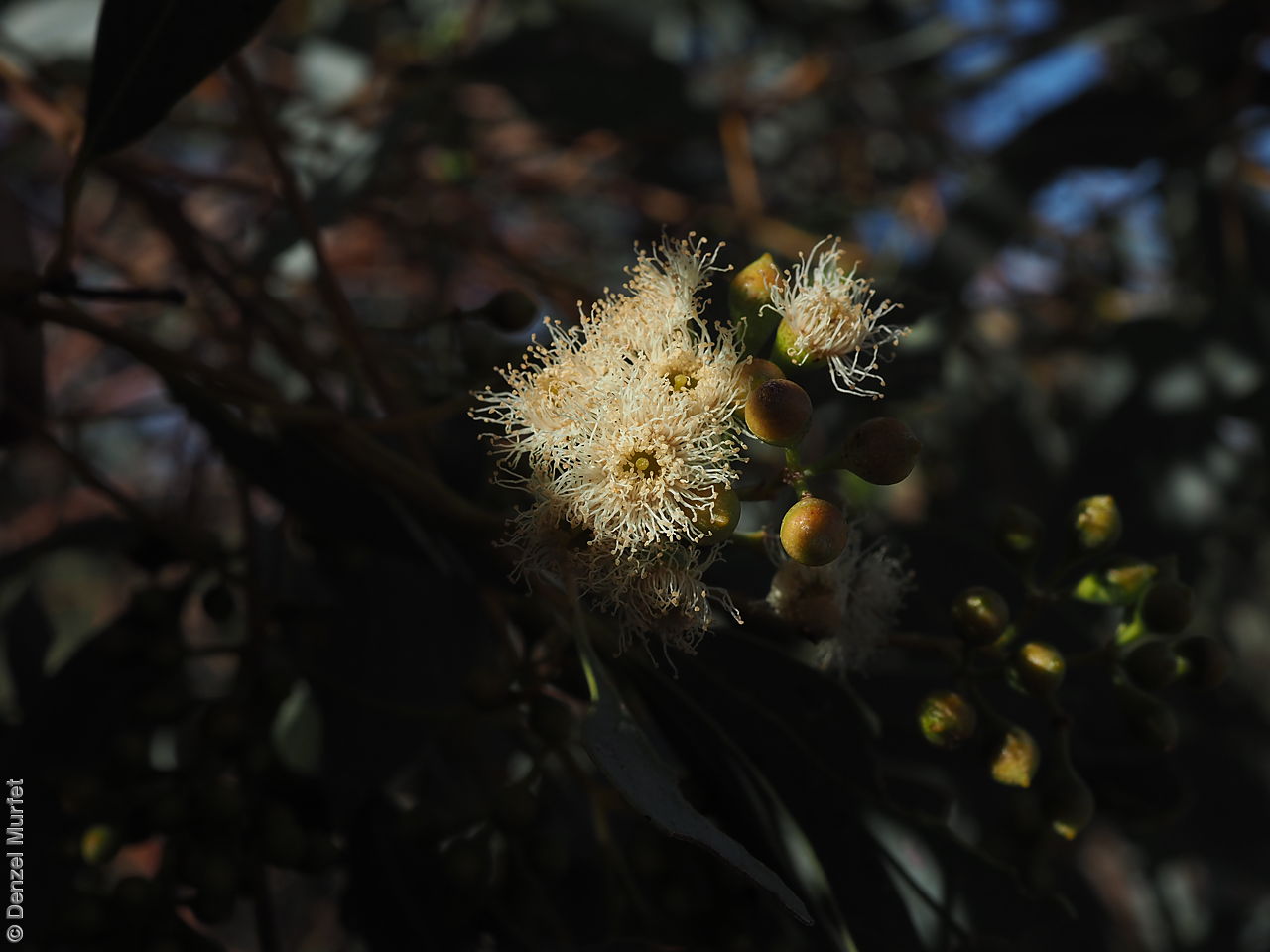
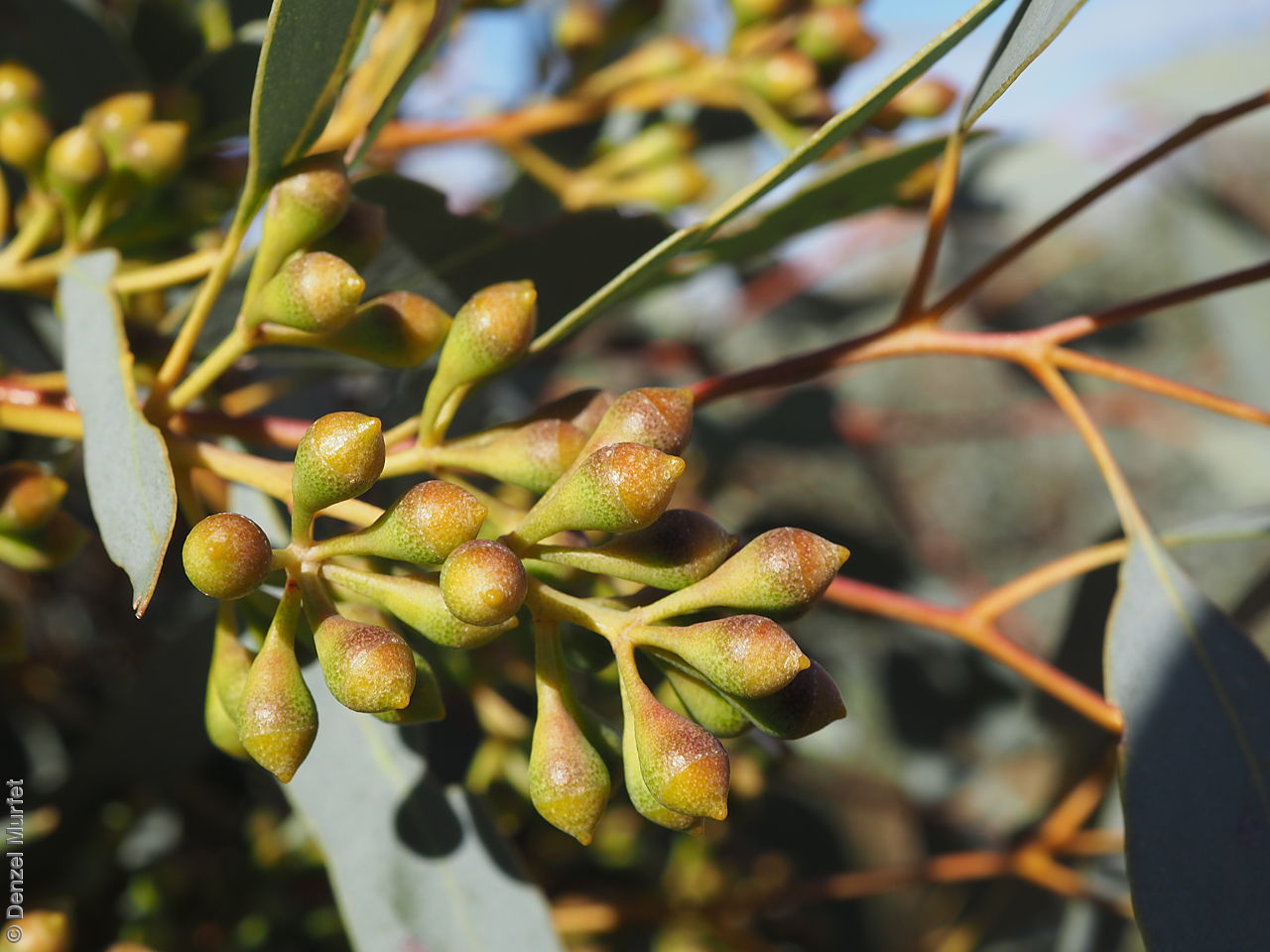
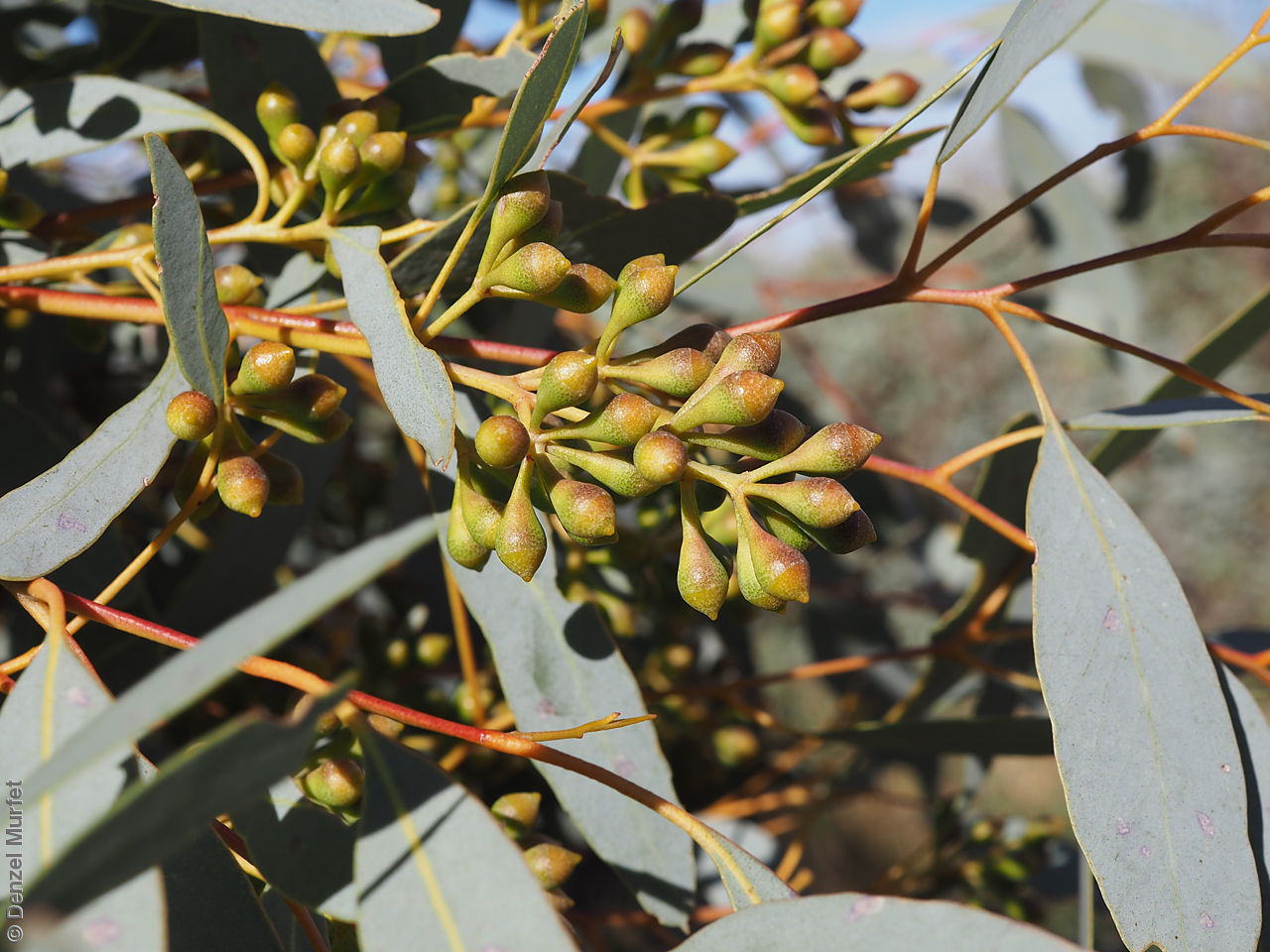
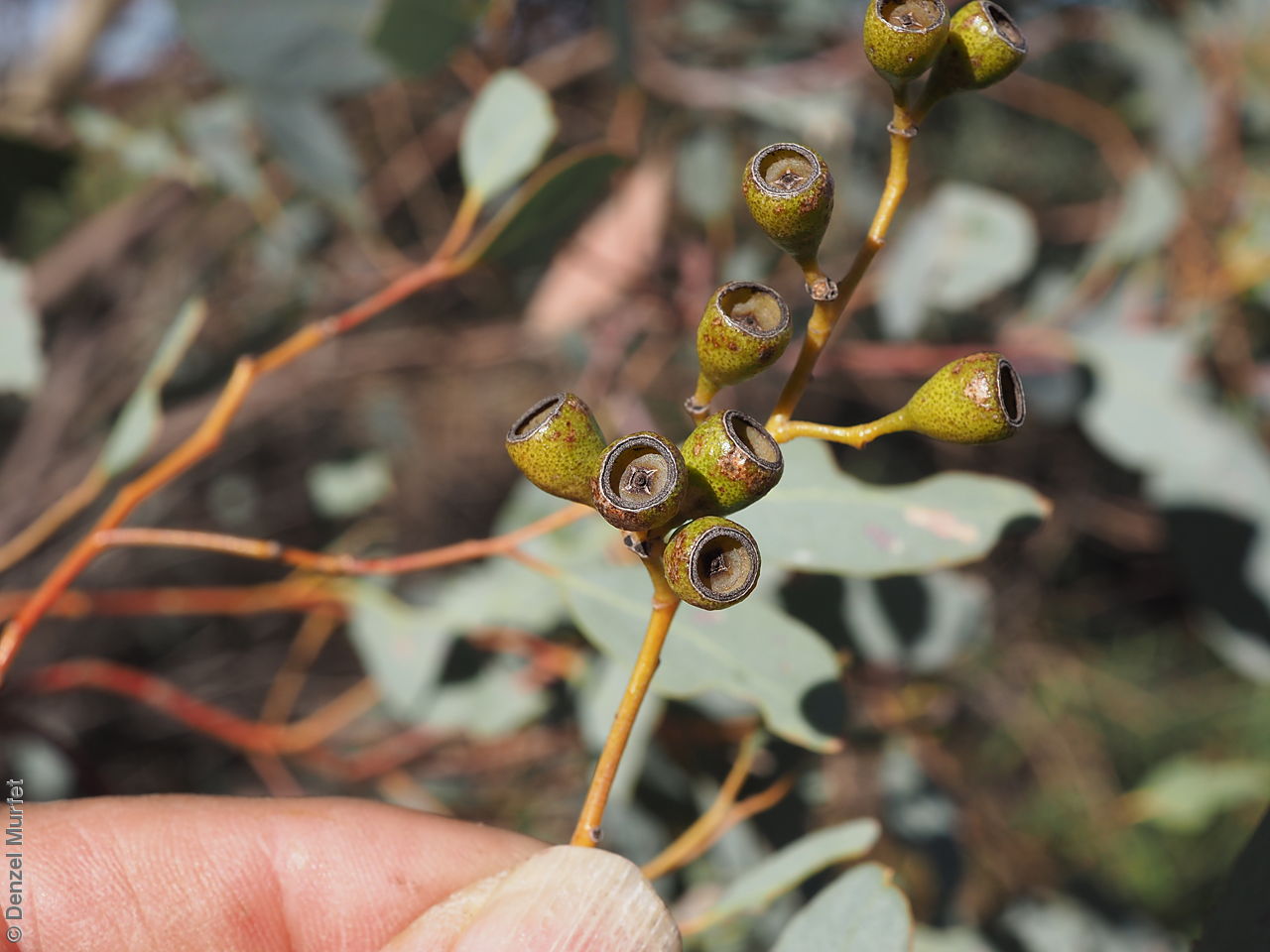

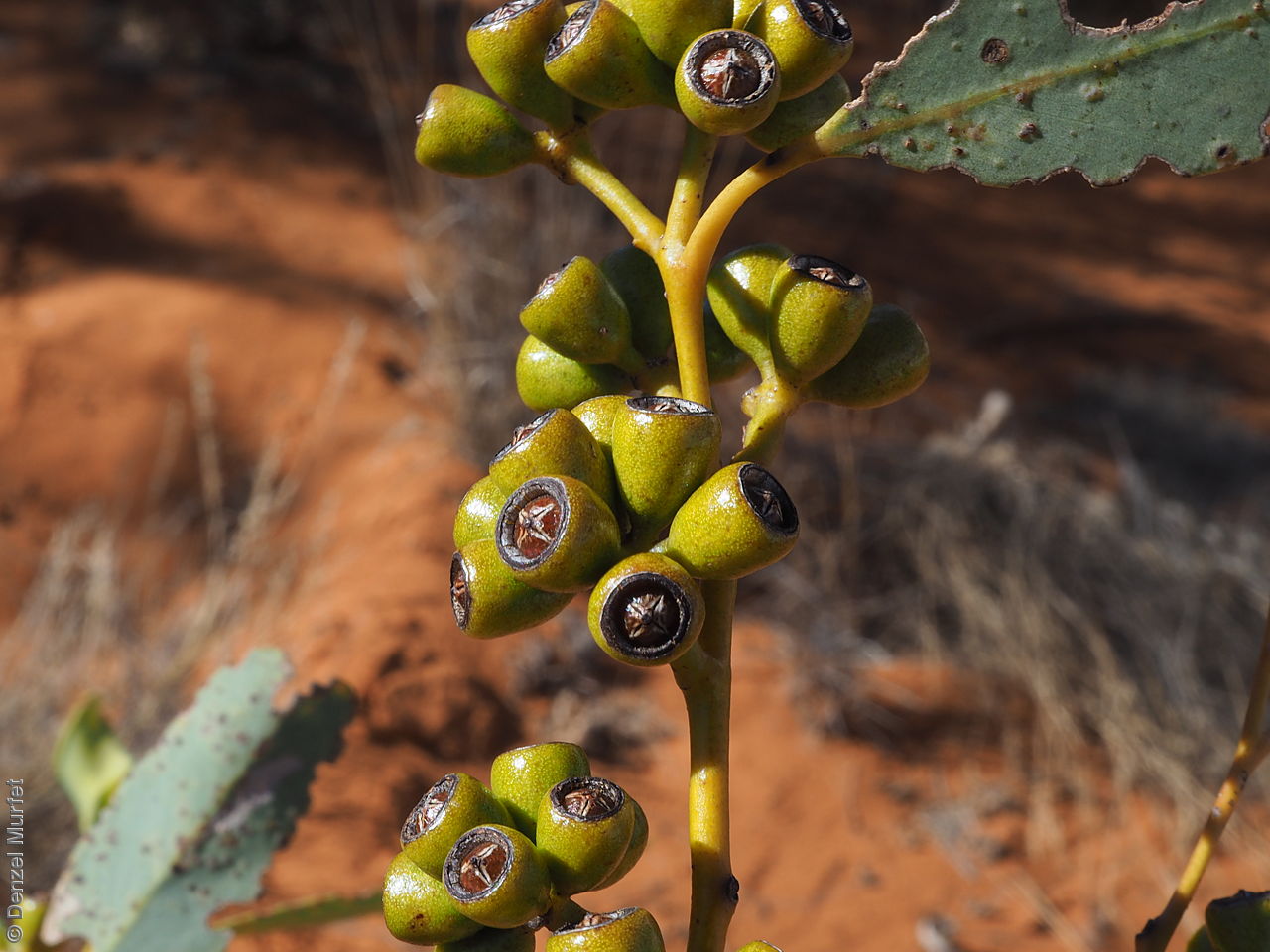
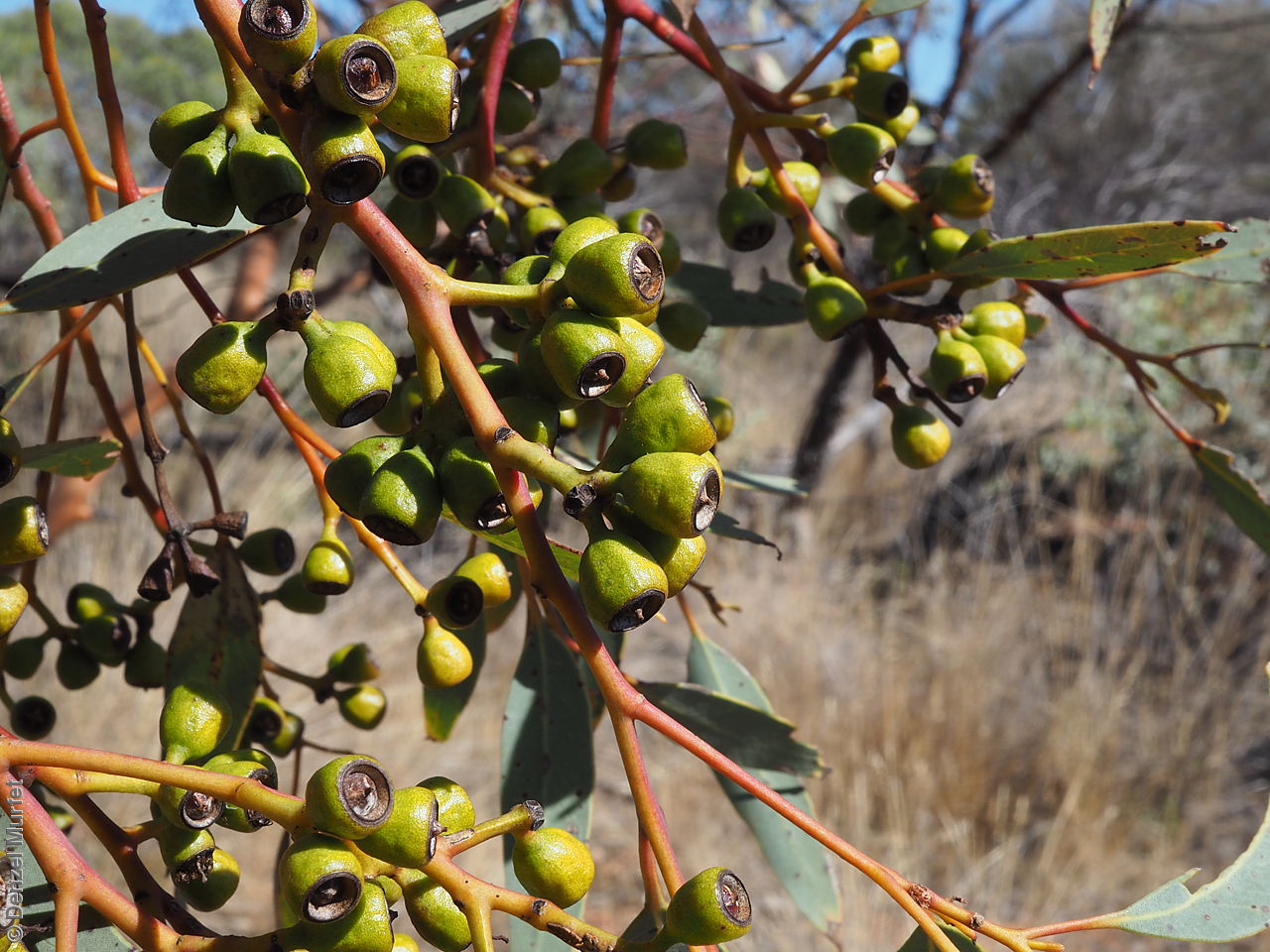


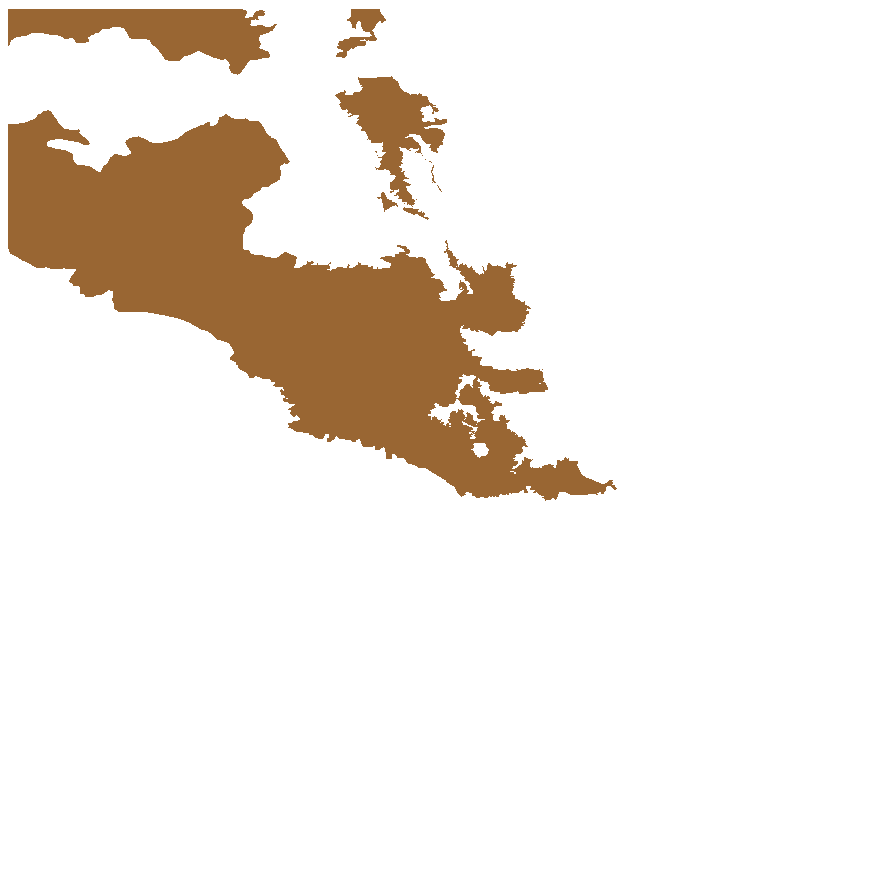
Botanical art
Prior names
Eucalyptus trivalvis
Common names
Desert Mallee
Three-valve Mallee
Etymology
Eucalyptus from the Greek 'eu' meaning well and 'calyptos' meaning covered, alluding to the cap or lid which covers the stamens in the bud. Trivalva from the Latin 'tri' meaning three and 'valva' meaning valve, referring to the species usually having 3-valved fruits.
Distribution and status
Found scattered across the western part of South Australia, growing in open mallee vegetation on gravelly sands and on rocky rises. Also found in Western Australia and Northern Territory. Native. Uncommon in South Australia, Common in the other States.
Herbarium regions: North Western, Gairdner-Torrens, Eyre Peninsula
NRM regions: Alinytjara Wilurara, Eyre Peninsula, South Australian Arid Lands
AVH map: SA distribution map (external link)
Plant description
Multi-stemmed mallee to 5 m tall with rough, fibrous, often loose, grey to dark grey-brown bark on the lower stems and smooth, coppery to grey to cream bark above. Juvenile leaves ovate to broad-lanceolate, dull, grey-green. Adult leaves to 130 mm long and 30 mm wide, lanceolate to elliptical, sometimes waxy, dull, blue-green to greyish. Flowers axillary in groups of 7-11. Buds to 12 mm long and 6 mm wide, rarely waxy, bud-cap rounded to cone-shaped, equal to or shorter than the base. Flowers creamy-white appearing sporadically. Fruits are cup-shaped to cone-shaped fruit to 10 mm long and 8 mm wide, rarely waxy; disc descending, valves 3 below or near the rim. Seeds are orange-brown ovoid seed to 1.5 mm long and 1.2 mm wide, with reticulated surface. Seed embryo type is folded.
Seed collection and propagation
Collect seeds between January and December. Collect mature fruits that are dark and hard (difficult to break with a finger nail), with the valves un-open any time of year. Leave the fruits in a breathable container in a dry room for one to two weeks. This allows the valves on the fruit to open and release the seeds. Separate the seeds by placing all the materials into a bucket and shaking it to dislodge the seeds. Pass the material through a sieve to separate the unwanted material. The finer material will contain both seeds (soft) and frass (hard) usually distinguishable from each other but can be very similar in shape and colour. With finer sieves, the seeds can be separated from the frass but this is not essential for storage or propagation. Store the seeds with a desiccant such as dried silica beads or dry rice, in an air tight container in a cool and dry place. From one collection, the seed viability was high, at 100%. Seeds are non-dormant, viable seed should germinate readily.
| Location | No. of seeds (weight grams) | Number of plants | Date collected | Collection number Collection location | Date stored | % Viability | Storage temperature |
|---|---|---|---|---|---|---|---|
| BGA MSB | 910 (4.58 g) 1,000 (5.4 g) | 30+ | 27-Oct-2004 | MOL4642 Gairdner-Torrens | 31-Mar-2006 | 100% | -18°C |
Number of plants: This is the number of plants from which the seeds were collected.
Collection location: The Herbarium of South Australia's region name.
% Viability: Percentage of filled healthy seeds determined by a cut test or x-ray.